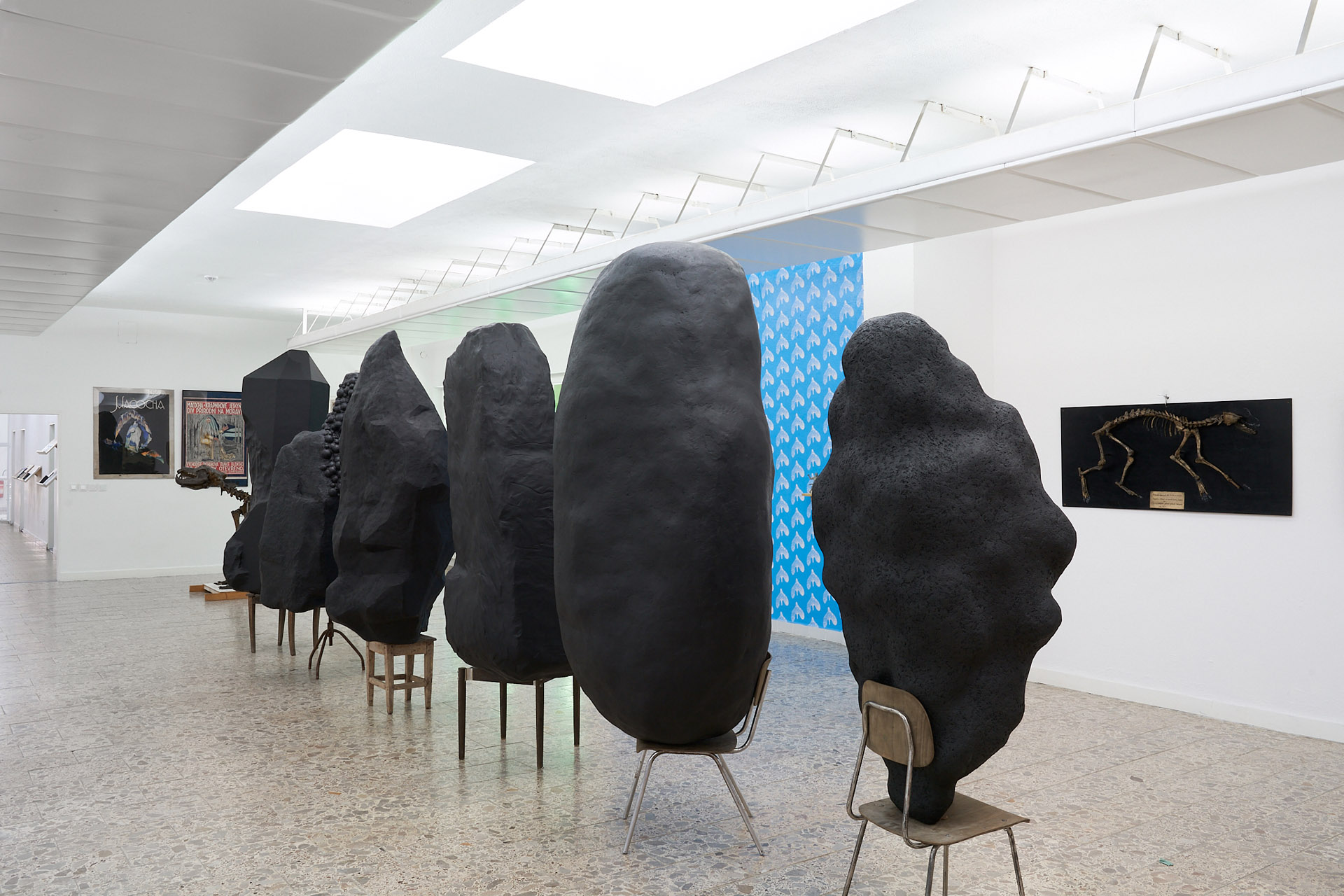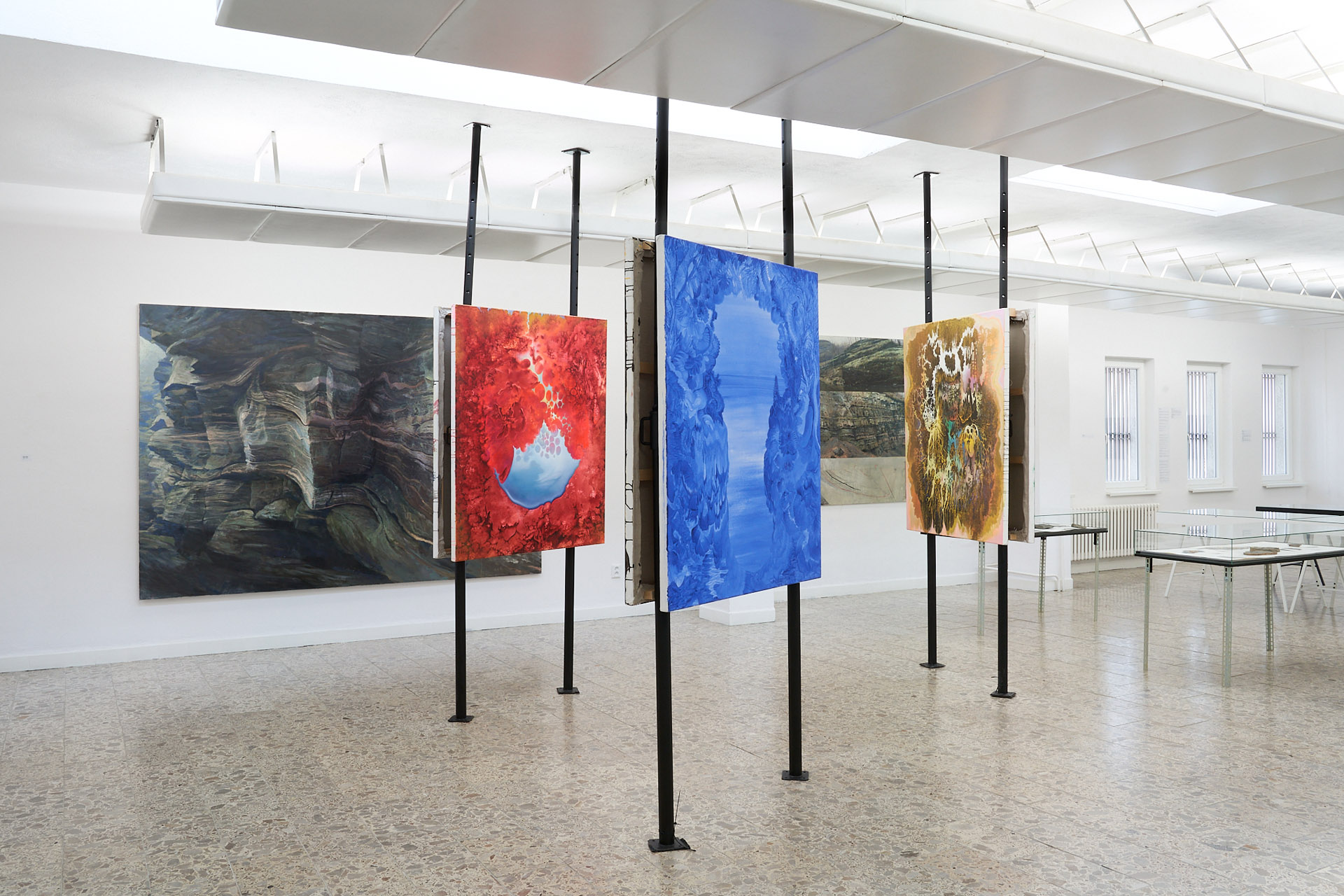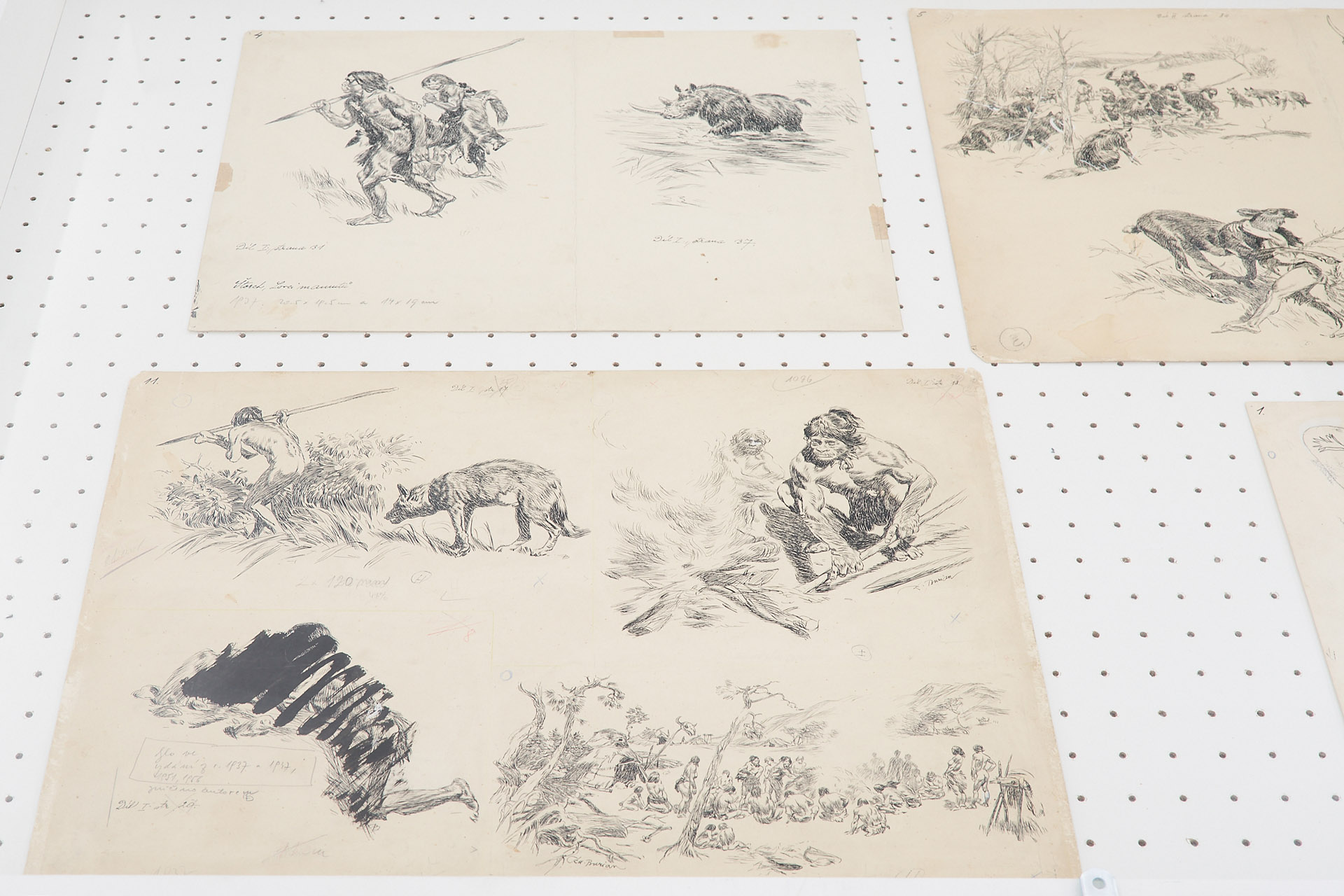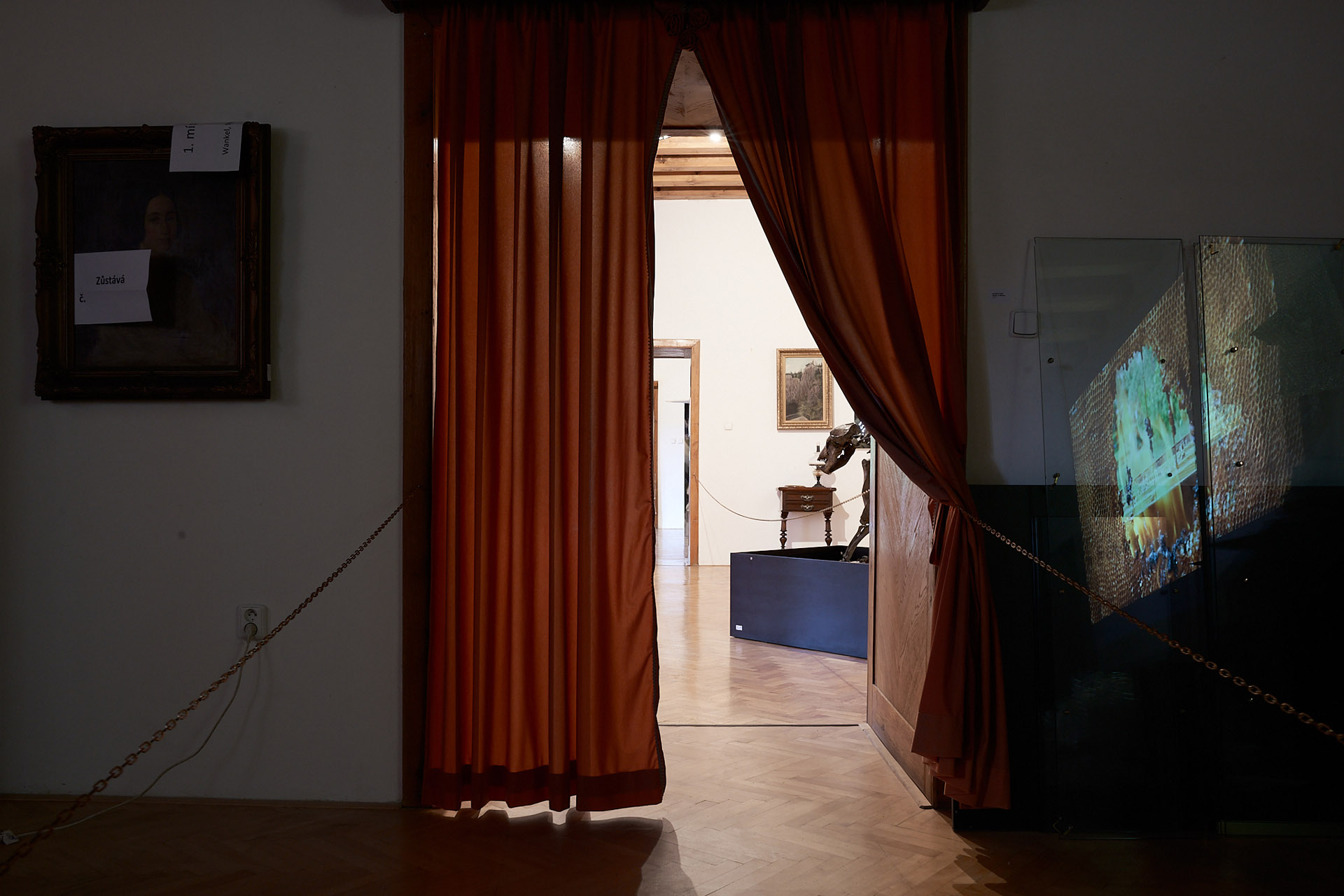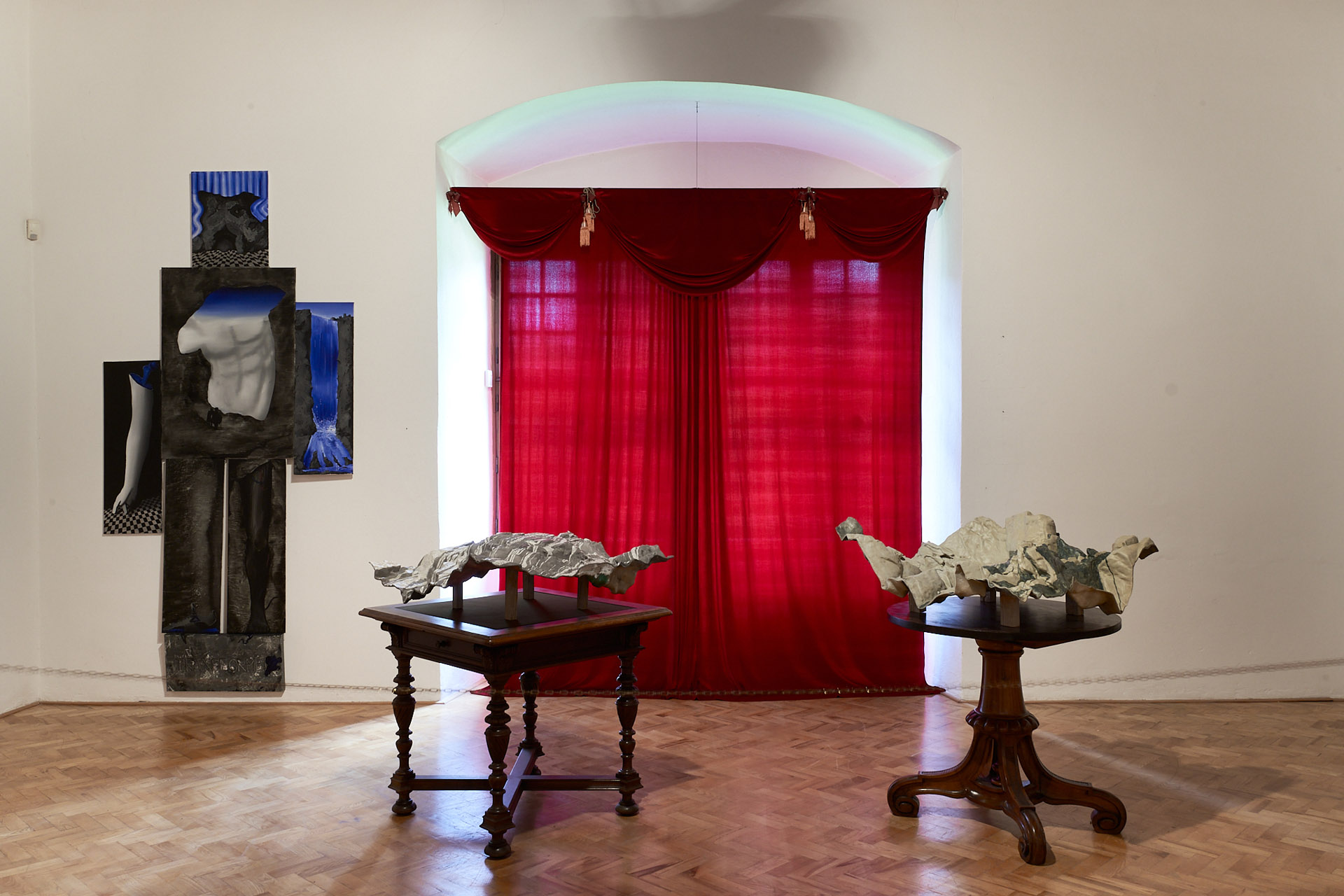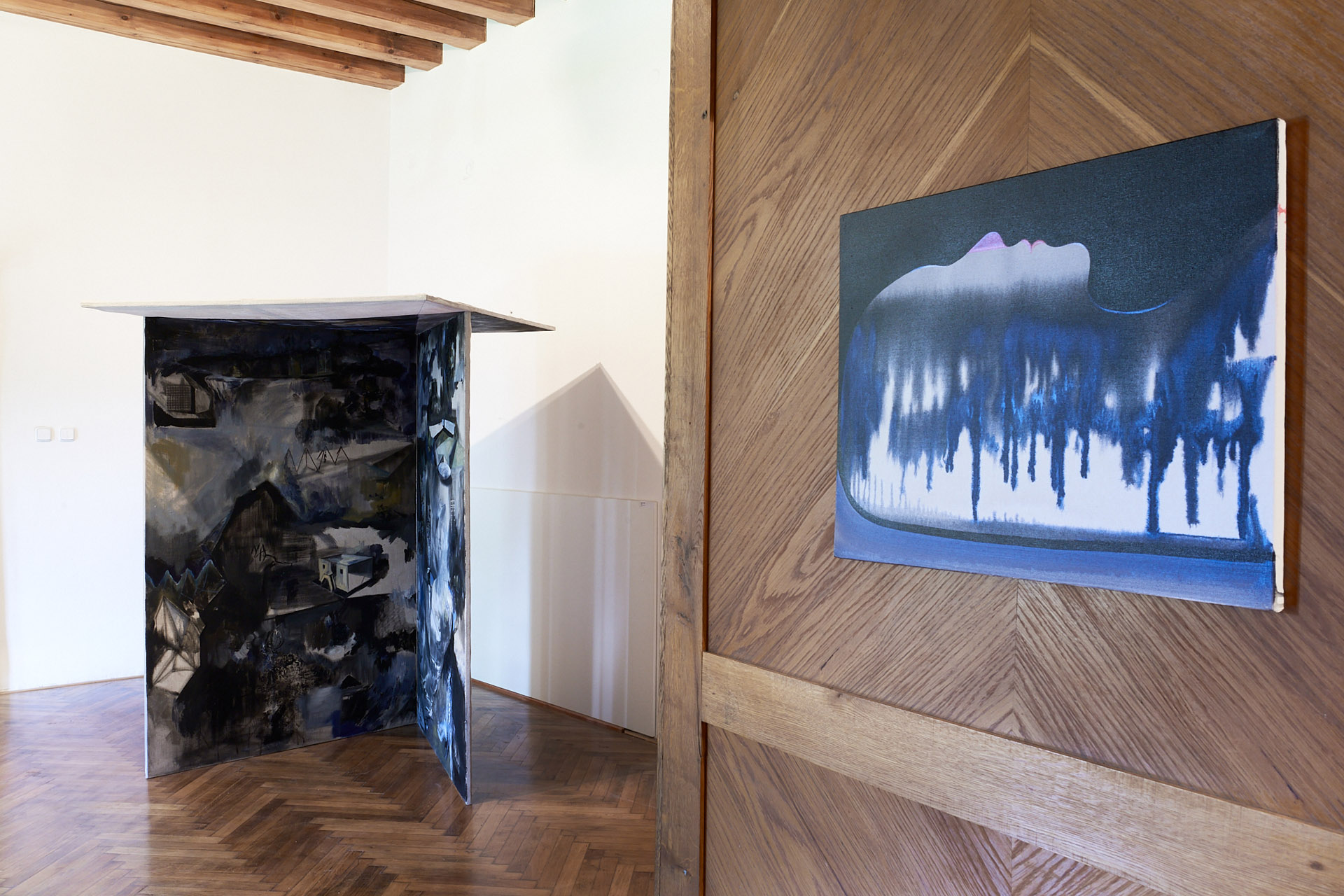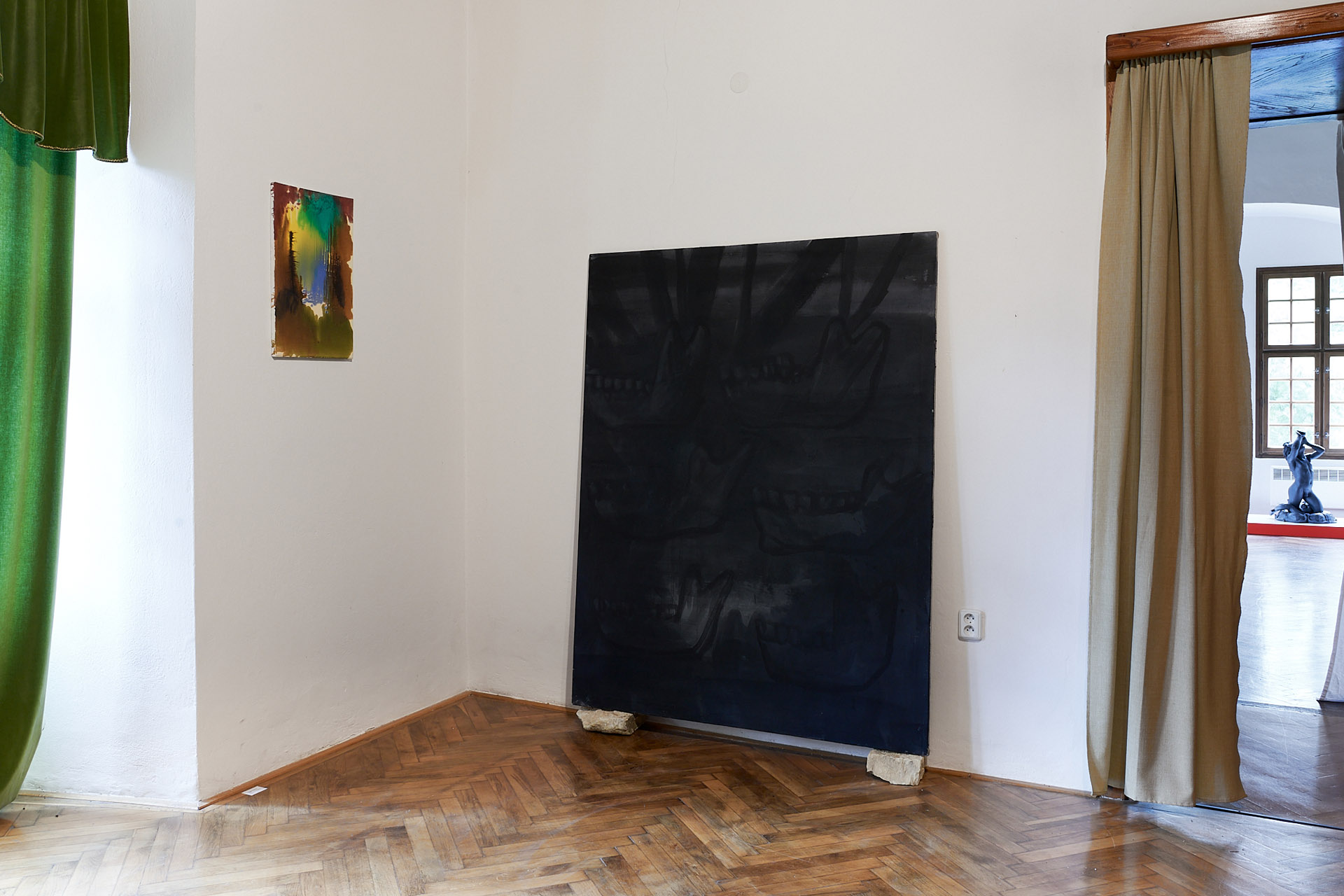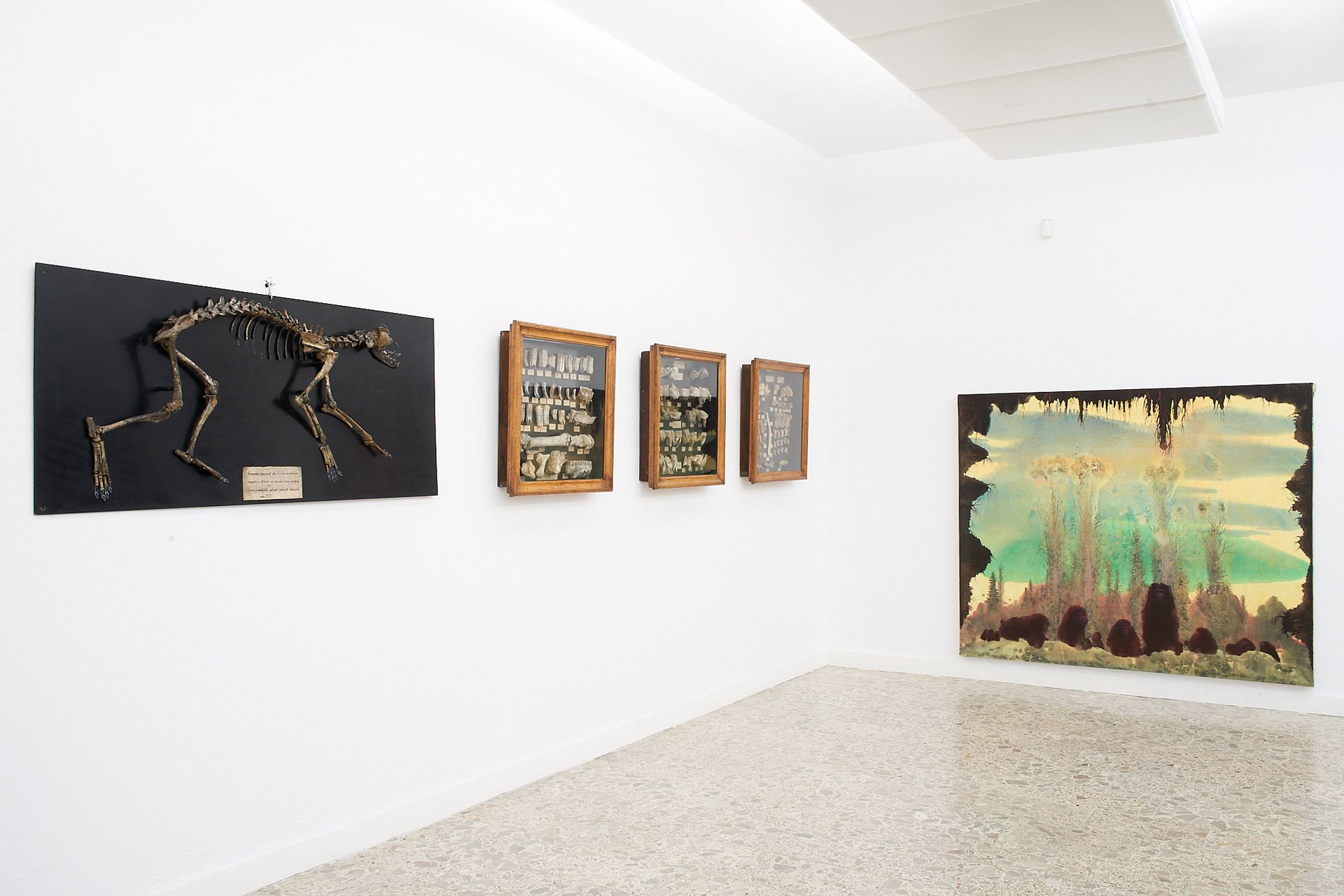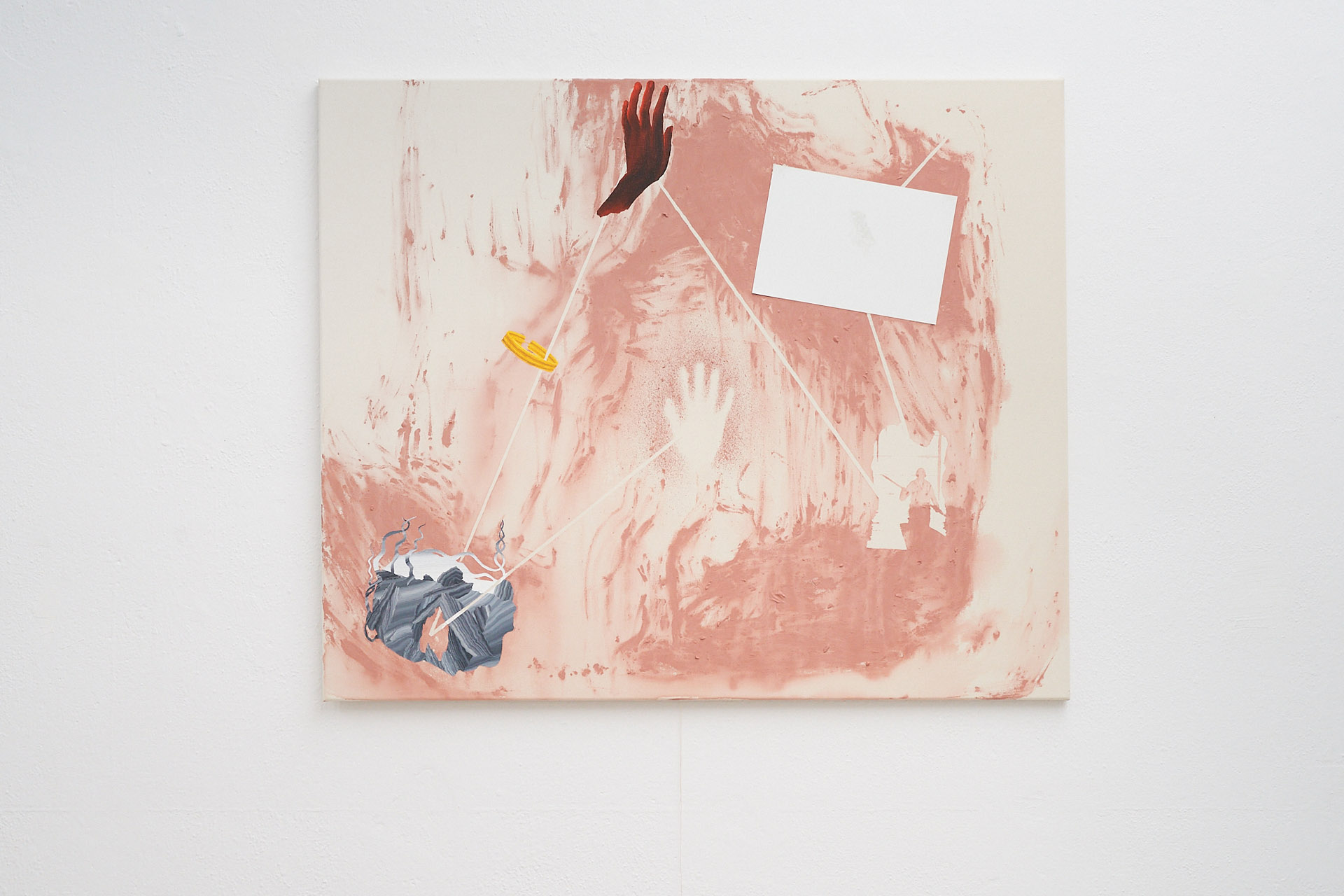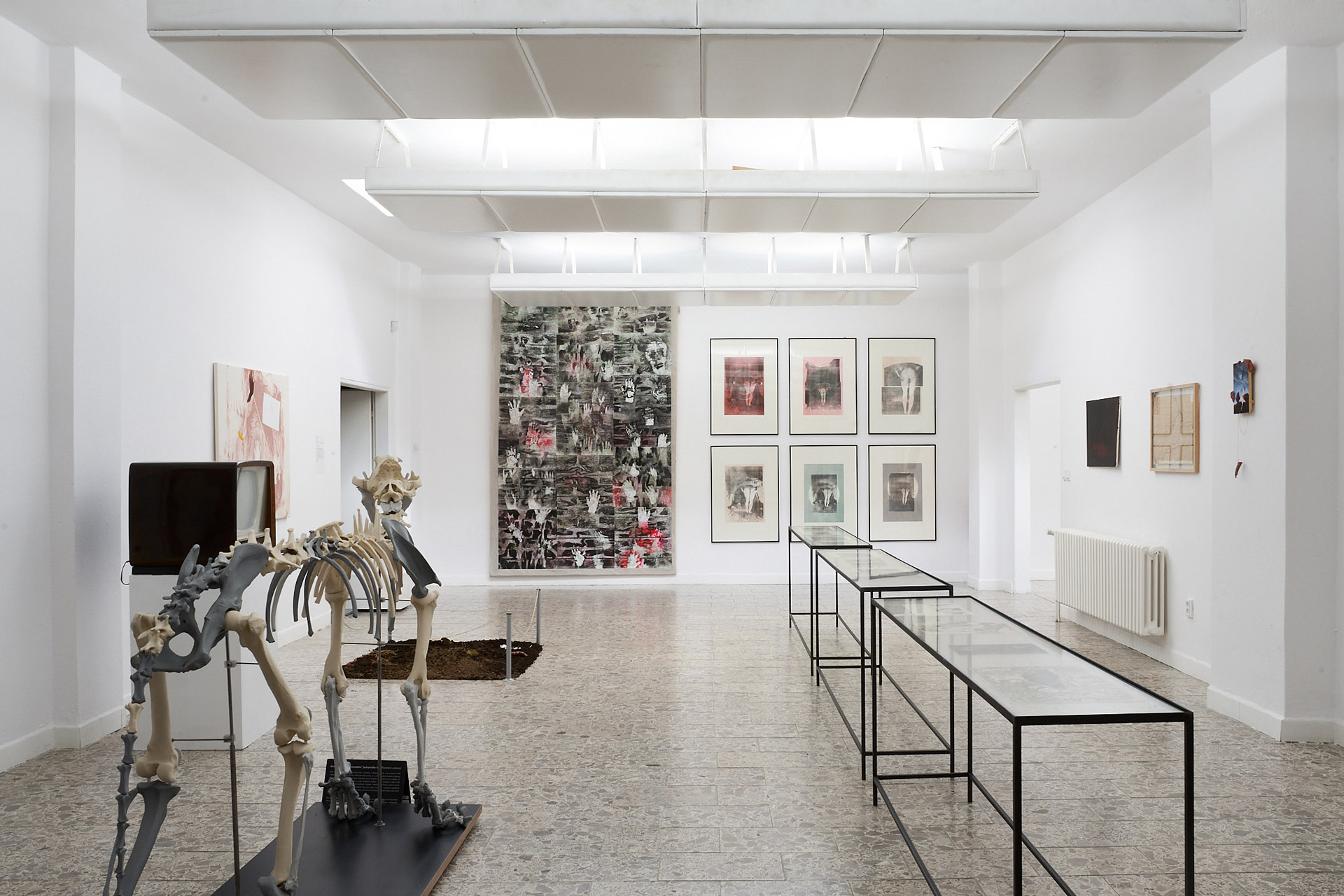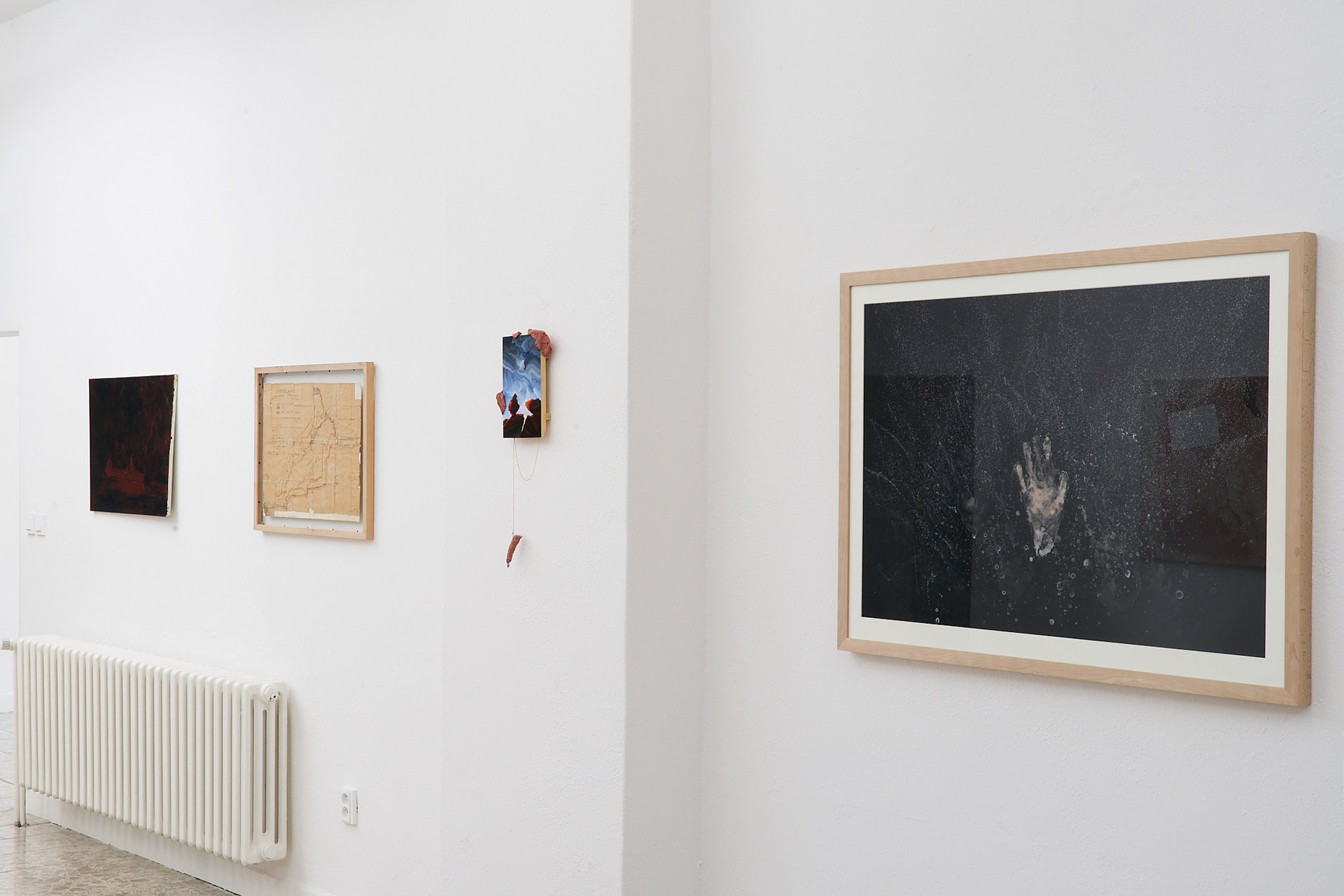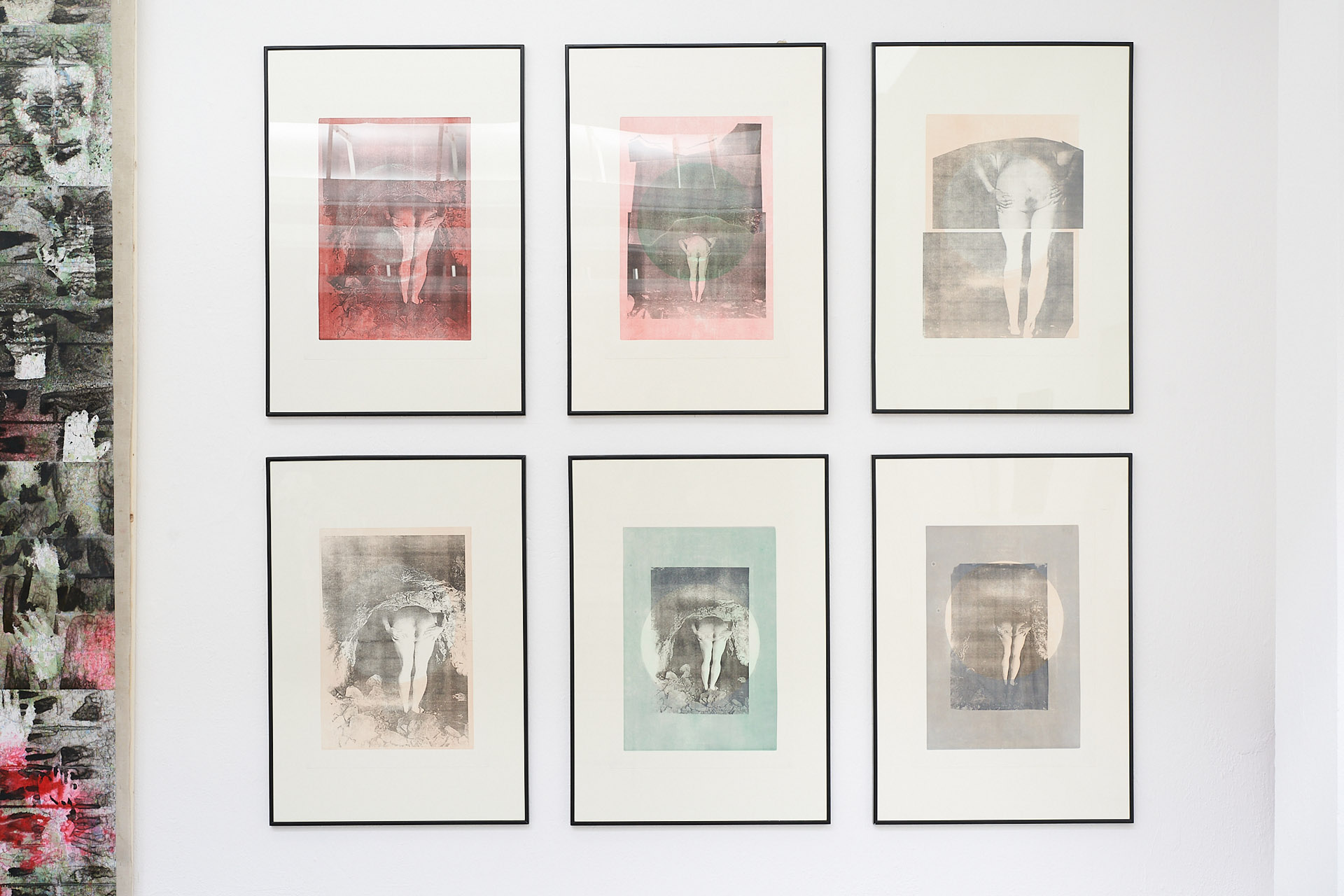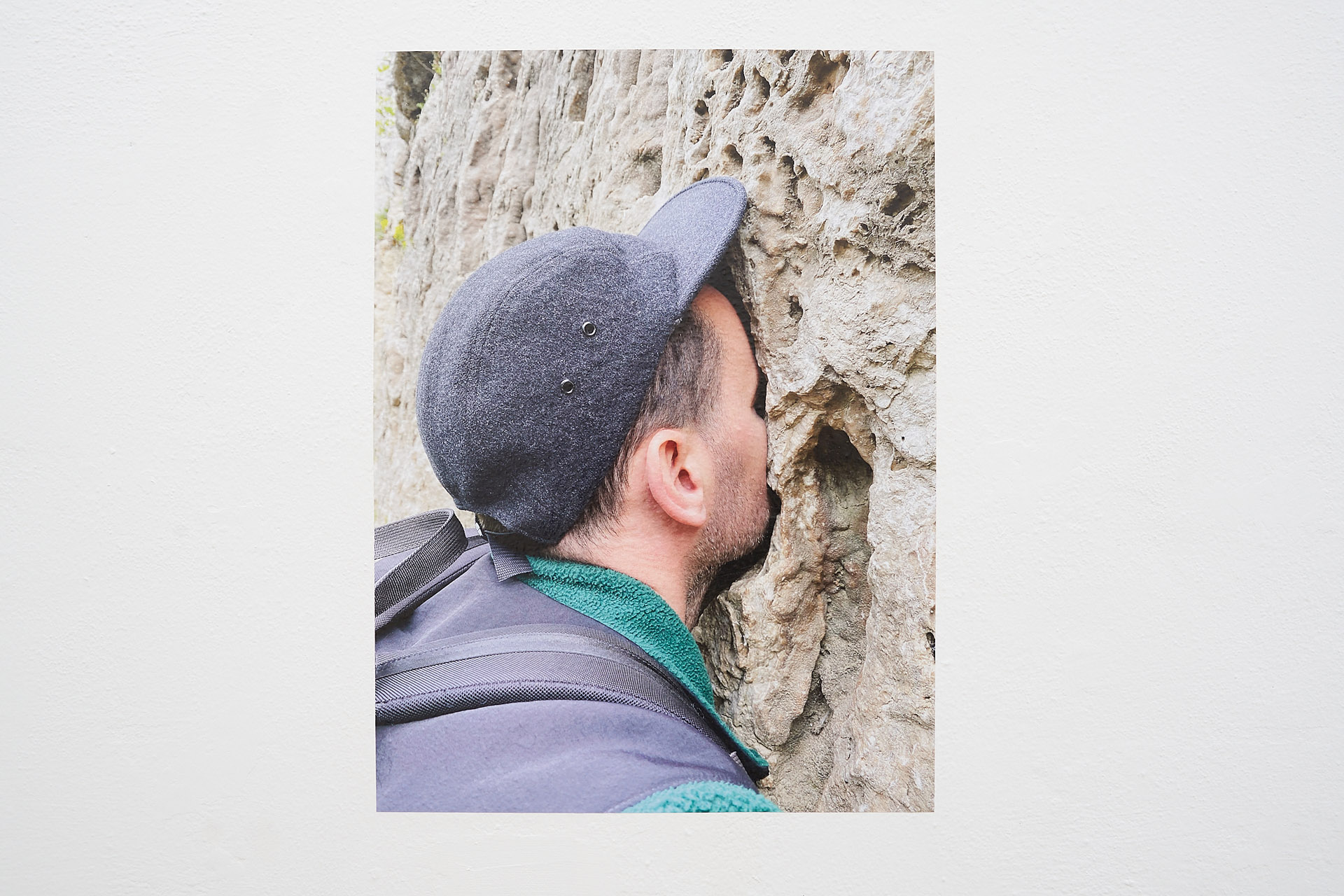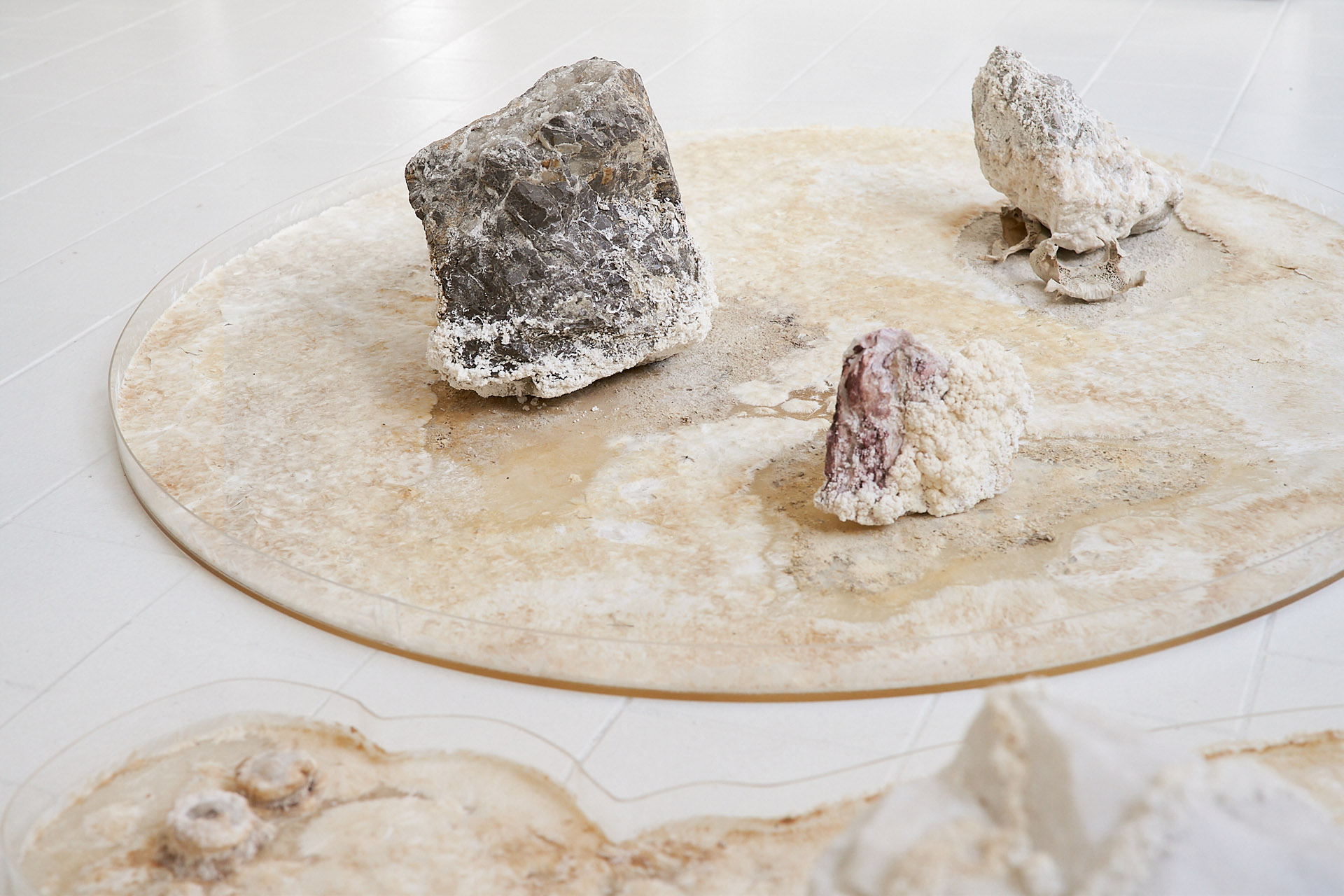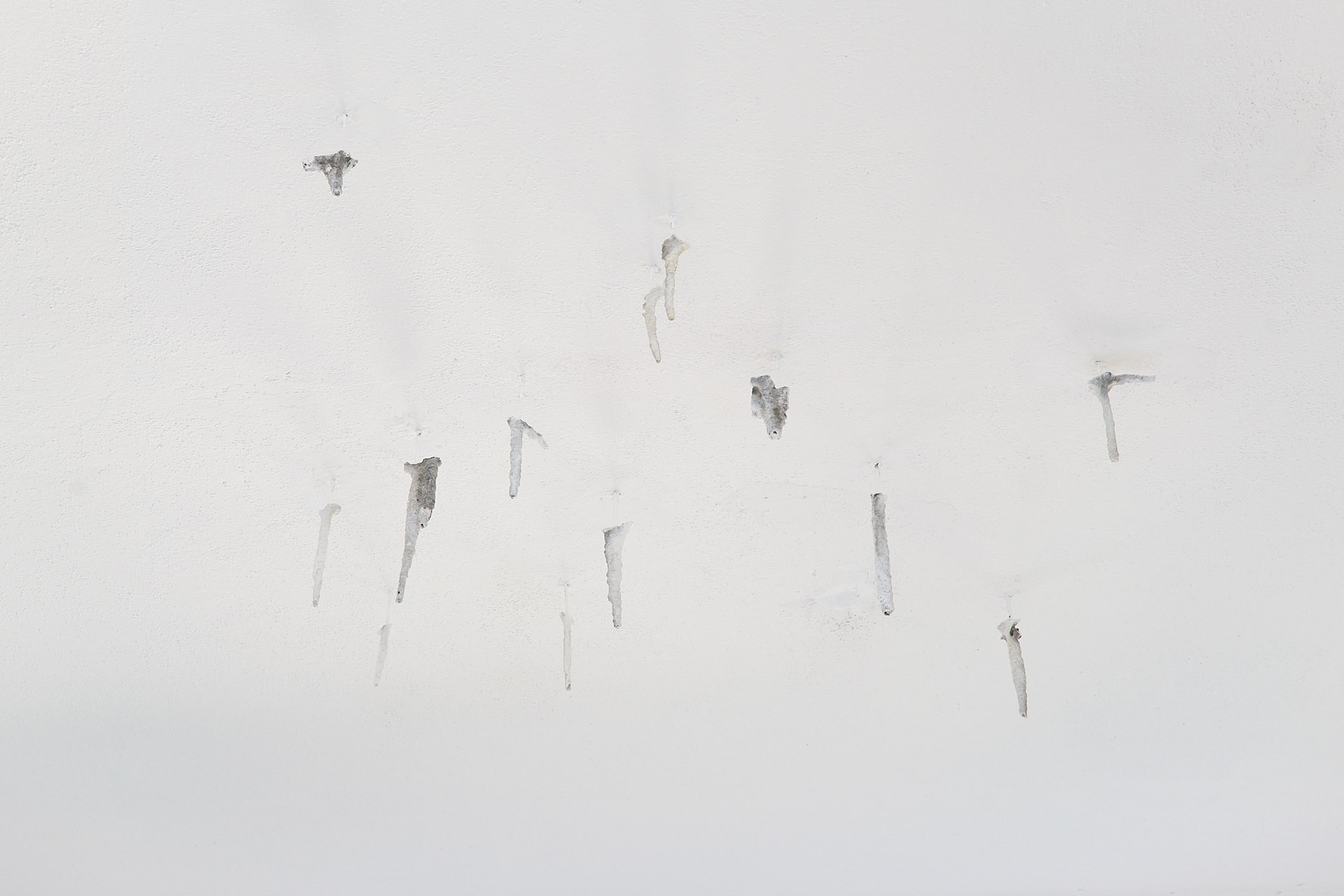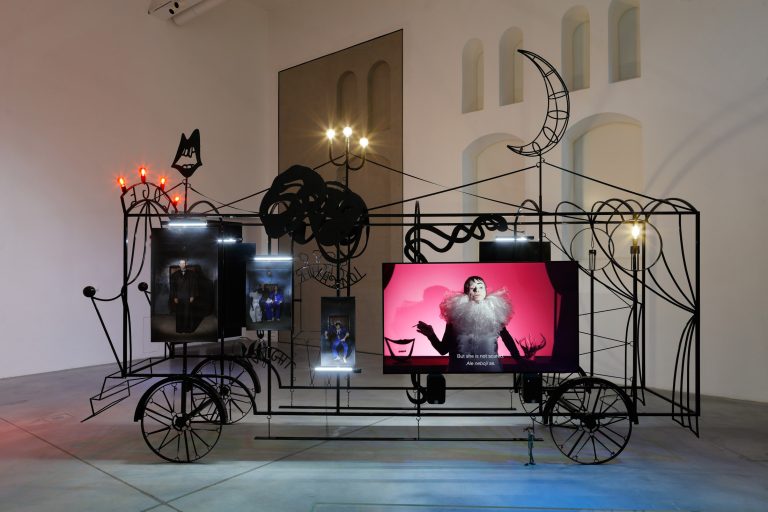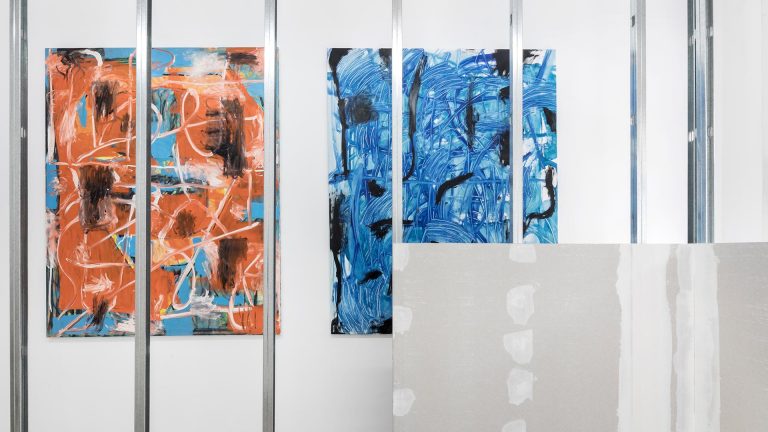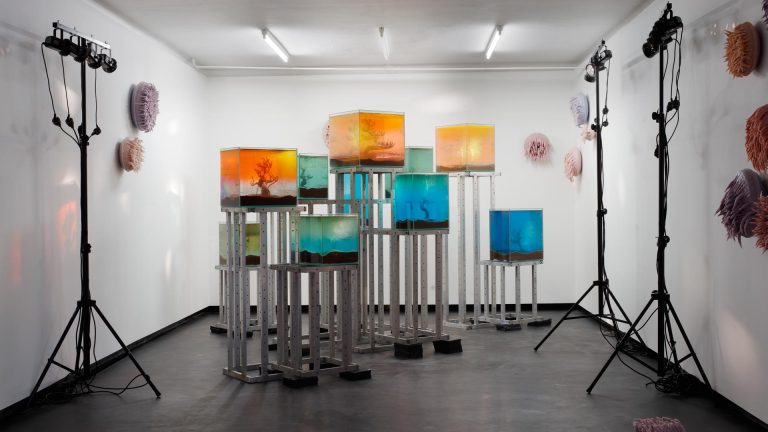Artists: Karel Absolon, Hynek Alt, Ondřej Basjuk, Zdeněk Burian, Mark Fridvalszki, Vladimír Havlík, Veronika Holcová, Anetta Mona Chisa, Jana Kasalová, Adam Kašpar, Marek Kvetán, Jaro Kyša, Šárka Basjuk Koudelová, Pavel Matyska, Rafani, Tomáš Ruller, Rudolf Sikora, Miloš Šejn, Lucia Tkáčová, Aleksandra Vajd and others
Exhibition title: Human in Cave
Curated by: Milan Mikuláštín and Jana Písaříková
Venue: Galerie Města Blanska, Blansko, The Czech Republic
Date: July 25 – September 12, 2021
Photography: Polina Davydenko / all images copyright and courtesy of the artists and Galerie Města Blanska
A format of the exposition is derived from the tradition of kunstkammer and curio cabinet, a historical predecessor of modern museums. One of these curiosities is a large skeleton of a cave bear lent to the Blansko gallery from Moravian Museum, which is located next to large-scale oil paintings, photographs and spatial installations. One may also find legendary illustrations devoted to the Mammoth Hunters drawn by Zdeněk Burian or historic relics from the first archaeological museum, which was operated by Jan Knies in the beginning of the 20th century in Sloup.
A central focus of the exhibition A Man in A Cave is a contemplation about geological phenomena like rocks, caves or abysses and their transformative role in the human continuum, delivered on the background of Moravian Karst, which is considered to be one of the Europe’s most valuable areas with regards to ancient art. For the first time, the gallery of Blansko exhibits posters and remainders of Karel Absolon, which served to promote tourism in Moravian Karst.
A selection of exhibits proves that rocks, abysses and rocks attract men’s attention for ages. For example, a cave Pekárna is a place of discovery of a bone engraving that is the oldest evidence of displaying a dramatic act. In this cave, performers Tomáš Ruller and Miloš Šejn chose to set their artworks in the 1970s and the 1980s. Descriptive realistic paintings of rocks by a painter Adam Kašpar, a big geology and palaeontology enthusiast, stands opposed to imaginative canvases by Veronika Holcová, in which the author uses the experimental technique of decal. A socially poignant spatial installation by a Czech-Romanian artist Anetta Mona Chisa thematizes an ancient matriarchy in relation to a current feminist discourse. A Hungarian artist Mark Fridvalszki, currently living in Berlin, works with a sentimental legacy of the golden era of Czech archaeology, which surpassed the borders of Czechoslovakia in its prime.
In many caves there were discoveries of prehistoric works of art and contemporary artists keep being inspired and provoked by them. They are a valuable resource of myths, cults, superstitions and wisdom until now. A cave is a metaphor of inside, a mind, a subconsciousness, of retracted memories, a mother’s womb. It is a place of existential realization and introspection, a safe asylum, but also purgatory, hell or an eternal nothingness. A man in a cave – a cave in a man.






